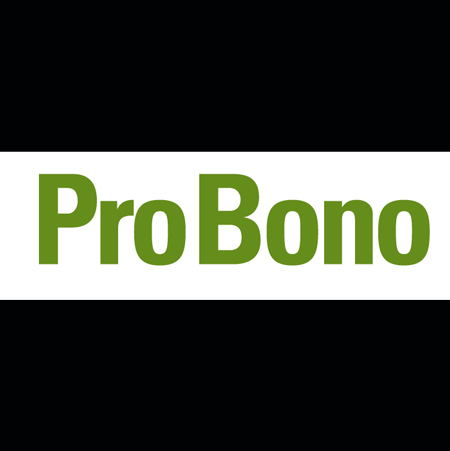October 30, 2015–This week marks 2015 Pro Bono Week (#PWB15), a global campaign to celebrate Pro Bono Services and programs.
As business professionals and corporations around the globe draw in the inspiration to strengthen their pro bono programs, earlier this week, CECP released our newly updated Pro Bono Valuation Guide (our two page document to help companies answer ‘What is Pro Bono’ and ‘How Is Pro Bono Valued’?).
Here are the 5 things you need to know about these exciting changes and updates.

Image generated from https://www.jasondavies.com/wordcloud/#
#1: What is the Pro Bono Valuation Guide?
It’s a definition and a dollar value. Through a partnership with the Taproot Foundation, CECP developed the 2015 standard, also known as the Pro Bono Valuation Guide, for the average-per-hour value of Pro Bono Service. The best way to apply a monetary value to Pro Bono Service is to determine the Fair Market Value (FMV) for services provided. (FMV is based off the employee’s actual salary).
However, in the absence of employee skill-data and internal billing rates, the Pro Bono Valuation Guide is a robust internal pro bono tracking system’s next best alternative to placing a value on pro bono hours.
#2: What Are the Signs Businesses Are Paying Attention to Pro Bono Services?
While corporate giving has grown for the majority of the world’s largest companies the past three years, pro bono support is one of the many factors that contributed to this increase in corporate giving (CECP, Giving in Numbers: 2015 Edition).
For example, the number of companies offering pro bono grew from 40% of companies in 2012 to 51% in 2014. In 2014 alone, our newest data, healthcare companies took the lead in offering pro bono programs to their employees, followed by technology companies. See more information on the trends in a blog entry by Data Insights Manager, André Solórzano earlier this week.
#3: Why is the 2015 update of the Pro Bono Valuation Guide important?
The partnership begun in 2009 between CECP and Taproot Foundation is the first-ever established standards for assigning a monetary value to Pro Bono Services, beyond the legal profession. These standards, now reanalyzed and released in 2015, allow companies to more accurately track and report the value of Pro Bono Services as a cash equivalent. This is part of the total giving data that CECP collects annually and publishes in Giving in Numbers, the leading report capturing the scope of and trends on corporate societal engagement.
#4: What are the new changes in the 2015 Pro Bono Valuation Guide?
A total of 8 skill areas most commonly offered as Pro Bono Service were identified: advertising and marketing, accounting, design, financial services, human resources, IT services, legal, and public relations (see chart below). There were previously only 5 categories.
There are hourly averages across three levels of experience, categorized by title or years of service: early-level ($90/hour); mid-level ($125/hr); and executive-level ($215/hr).
If reporting by skill area and/or levels of experience is not available, companies may use the average rate of an employee’s volunteer service for pro bono of $150 per hour. This is an increase from $120 as published in 2009.

Figure above from CECP’s Defining and Valuing Pro Bono Service https://cecp.co/measurement/tools/valuing-pro-bono-service.html
#5: What Do Pro Bono Services Offer a Company?
Employee engagement is an integral strategy for corporations, and Pro Bono Service itself is the fastest-growing volunteer program across the largest companies across the globe as companies continue to recognize its value.
Think of pro bono as a strategy to apply the skills and resources of your company in a meaningful way and to communicate your company’s commitment to helping your partners solve their societal challenges. Pro bono is also an understandable way—for internal and external audiences—to underscore the commitment your company can make to the community by tying its core skills and resources to community solutions.
For more information about “What is Pro Bono Service?” visit https://cecp.co/measurement/tools/valuing-pro-bono-service.html or download the 2-pager ‘Defining and Valuing Pro Bono Service’.
Still have more questions about pro bono? Let CECP know atinfo@cecp.co! Or Tweet about your programs to celebrate and share your work: @CECPTweets #PBW15 @TaprootFound


